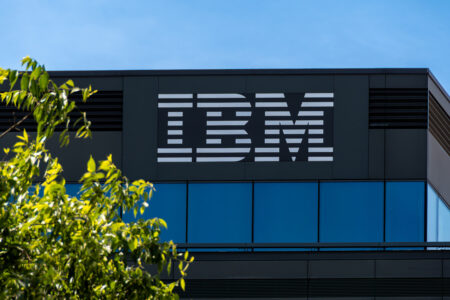
Fresh off its groundbreaking cloud-interconnect partnership with Microsoft, Oracle is pushing to form similar multi-cloud agreements with Salesforce, AWS, Workday, and every other major infrastructure and/or applications cloud, chairman Larry Ellison said last week.
Speaking to financial analysts on the final day of his company’s CloudWorld event in Las Vegas last week, Ellison spoke passionately about the need for the cloud industry to overcome its self-imposed “bizarre idea” of “walled gardens” that prevent customers from easily working with whatever cloud providers they choose.
And here is the punchline from his overview of the true multi-cloud future Oracle is working to create: “Our intention is to interconnect to all the clouds, and I think customers are going to demand that,” Ellison said.
By “all,” Ellison was emphasizing that Oracle’s intentions are to enable customers to build multicloud environments with:
- infrastructure providers like AWS and Google Cloud in the same fashion as the recent landmark Oracle/Microsoft partnership; and with
- cloud-applications providers such as Salesforce and Workday (and, I would assume, SAP, although Ellison did not mention that particular rival).
“Our plan is to interconnect not only to infrastructure clouds, like Azure,” Ellison said. “And while this may come as a surprise to Marc Benioff —who’s a very dear friend of mine, and I think he’s done a great job at Salesforce — but our intention is to connect to the Salesforce cloud so if you want to use Oracle technology alongside of Salesforce technology, we’re going to make that as easy as possible.”
The Primacy of Customer Expectations
And why exactly is Oracle pursuing this approach?
“Because we think that’s what customers want,” Ellison said with great assurance.
For customers to gain full freedom to work with whatever cloud providers they desire, Ellison said, it’s essential that these multi-cloud agreements extend to both infrastructure and applications. That stems from Ellison’s belief — one that I have long shared here at Cloud Wars —that while cloud infrastructure and cloud applications are different types of products, they are in fact the same business.
“Some people think of the cloud as two different businesses — applications and infrastructure —even though all applications run on infrastructure, and all applications need to use AI, which is infrastructure, and all applications do analytics, which are infrastructure, but somehow it’s divided in half,” Ellison said.
“But I think it’s actually one business.”
Ellison went on to rail against the notion that once a customer commits to a certain cloud, then that customer is locked out from working with other providers.
The Limitations of ‘Walled Gardens‘
“And all of those clouds really came out as walled gardens. It was fascinating…. Some people say you go to IBM for everything — absolutely everything. Or you go to Amazon for absolutely everything, unless you go to Azure for absolutely everything because they do everything also. Then of course Google had to go into the ‘everything’ business.
“It was a really bizarre thought because these clouds were not interconnected. They were all independent. You picked one and you did everything there,” Ellison said
“We forgot all about open systems, we forgot all about customer choice, we forgot all about interoperability and standards and all of that. And so you had these new walled gardens that people got very excited about.
“In fact, some companies do certain things better than other companies. Some people do AI better than other people, some people do data warehousing better than others, and customers really want to connect to the cloud that has the technology that they’re interested in. And that would be multiple clouds.
“So they have to able to connect to multiple clouds — and that’s what we’re trying to do,” Ellison said.

The Tyranny of ‘Data-Egress Fees‘
Ellison then skewered the longtime AWS practice of charging customers for moving their own data out of AWS, a policy that Ellison believes runs entirely counter to the very notions of open systems and a true multi-cloud approach.
“I mean, these things like data-egress fees. So I’m not picking on AWS — I think it’s actually a great company — but if you put your data into AWS and later you want to move your data out of it, then you’ve got to pay AWS to move it by paying this egress fee.
“We don’t have any egress fees with Azure between Microsoft and Oracle. We don’t do that. It’s your data. You can move it wherever you want to.
“I mean, Amazon’s approach is, ‘If you move data into Amazon that’s free, because we’re an awesome company. But if you move it out, no chance — you pay us for every byte, every single bit of data you move out, you pay us by the bit.’
“This is a very strange idea. And we think that’s going to break down in the face of what customers had come to expect for over a long period of time, and what they expect now.”
Customers Want Multi-Cloud Freedom
And since Oracle and Microsoft announced the latest development in their multi-cloud partnership a couple of weeks ago, Ellison said, customers have been pushing Oracle to do more.
“We’ve had a very large customer say, ‘Hey, what you did with Azure is what we want you to do with this other infrastructure company as well, please.’
“And so we’re in discussions and we expect to interconnect to other infrastructure clouds. And we expect it to interconnect to application clouds like Salesforce and others — all of the majors —because that’s what customers want.”
Gain insight into the way Bob Evans builds and updates the Cloud Wars Top 10 ranking, as well as how C-suite executives use the list to inform strategic cloud purchase decisions. That’s available exclusively through the Acceleration Economy Cloud Wars Top 10 Course.










